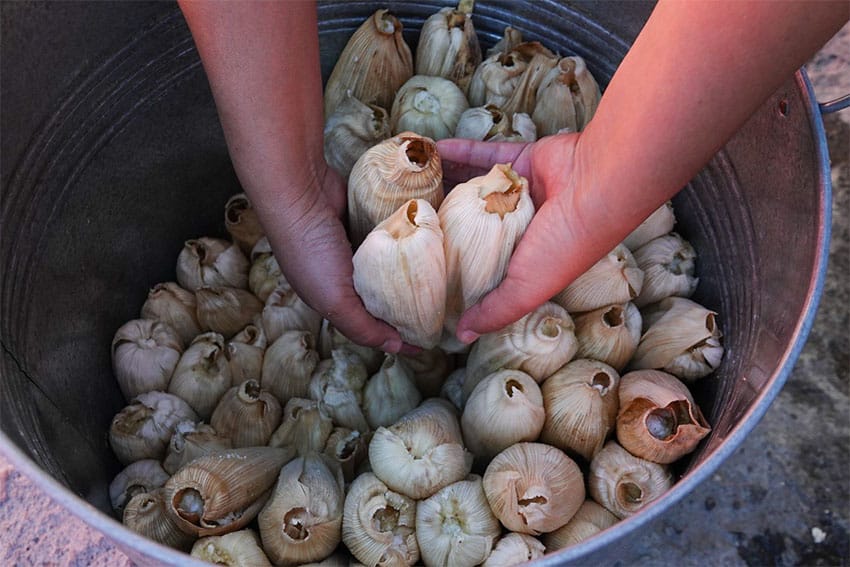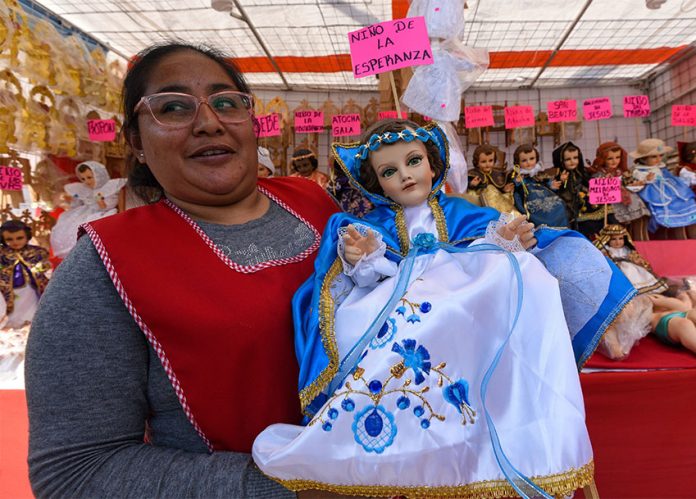On Feb. 2, many families across Mexico celebrate Día de la Candelaria, or Candlemas Day, a holiday in which they get together to eat tamales traditionally paid by those who found the baby Jesus figurine inside the Rosca de Reyes.
Although this festivity could be considered a follow-up celebration to Kings Day, La Candelaria has its origins in biblical events: Catholic tradition recounts that the Virgin Mary and baby Jesus went to the temple 40 days after the baby’s birth, so that the mother could be “purified” as mandated by the Law of Moses, also known as the Torah. The Virgin Mary also brought candles to the temple to be blessed, giving the holiday its name.
However, Día de la Candelaria is also influenced by another event. At the end of the 15th century, two shepherds found an image of the Virgin Mary on the seashore of the Canary Islands in Spain. The Virgin was later named Candelaria.
Eventually, baby Jesus’s presentation at the temple, the Virgin Mary’s purification and the commemoration of the Spanish Virgin Mary of Candelaria started to be celebrated together, leading to the modern Día de la Candelaria. This tradition arrived in America as part of the Spanish Conquest.
As usually happens, the tradition evolved in different ways across Latin America. In Mexico, tamales were fortunately added to the festivities because Feb. 2 was also a special day for the Mexica people (ancient inhabitants of today’s Valley of Mexico).
On this date, the Mexicas celebrated the start of the planting season with the blessing of the corn that would later be planted as a tribute to Tlaloc, the god of rain, asking for a good harvest. With the Spanish conquest, the blessing of the corn stopped and instead the Mexicas would only eat tamales.

The tamal or tamalli means “carefully wrapped” in Náhuatl and according to Fray Bernardino de Sahagún’s book General History of the Things of the New Spain, tamales were eaten by the Mexicas for special occasions and festivities.
Today, many Indigenous communities still bless the ears of corn that will serve as seeds for the planting season.
Another tradition associated with Día de la Candelaria is the dressing-up of baby Jesus dolls and figurines in elaborate costumes. This tradition was also born in Mexico but in more recent times (1912). It mandates that 40 days after Christmas, baby Jesus must be removed from the nativity scene and covered up with fine fabrics. Nowadays, the baby Jesus is dressed up with all types of outfits made from organza, satin, silk, chamois and taffeta and with sequins, pearls and glitter. During the COVID pandemic, baby Jesus figurines even wore face masks.
According to newspaper Milenio, Mexican families dress up their baby Jesus figurines as a way to strengthen their faith in hard and difficult times. Milenio also reported that on average, people spend between 40 pesos and 300 pesos (US $2 to $16) on an outfit for the baby Jesus.
This tradition is mostly celebrated in Mexico City, where there is an area of Talavera Street in the La Mercerd neighborhood dedicated solely to the selling of baby Jesus outfits. The area was designated as a Cultural Corridor in 2011 by then-Mexico City Mayor Marcelo Ebrard.
